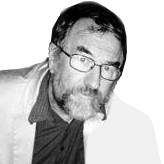A black-hatted stranger approaches. Where are you from? I come from across the Eastern Ocean. What do you bring? I bring death.
The name of the disease the stranger brings is Oimmeddam, which means “sickness without borders” in the language of the Pima people of what is now southern Arizona.
When travelers came across the Eastern Ocean to New York City two weeks before St. Patrick’s Day 2020, mostly on passenger planes, the Oimmeddam they brought with them would soon be known as Covid-19.
Between March 11 and May 2 of last year, there were 18,879 deaths in New York City from the virus. That is about 350 deaths per day. By the end of 2020, 680 frontline health-care workers in New York and New Jersey alone had lost their lives to the disease. Across the United States, the number was 2,900.
The Surge at Mount Sinai, a documentary directed by Jonny Kapps and co-produced by the Mount Sinai Health System, is an account of this utter catastrophe and how it unfolded at the hospital. The film, which premieres on Discovery+ on July 1, is narrated by Jon Bon Jovi and includes an original song by the pop star Billie Eilish.
Kapps films Manhattan with love. He shows empty streets where emptiness has never been seen before. If the streets are empty, where is the pandemic? Where is the pandemonium? It is in the hospitals of the city—and the country, and the world. In their emergency rooms and their intensive-care units.
Kapps filmed in real time at Mount Sinai, which acts as an everyhospital. We meet a not yet retired schoolteacher who spent 128 days in the hospital, 51 of them on a ventilator. He is what intensivists call a “save.” The nurse attending to him was an experienced I.C.U.-trained R.N., supervising 15 admissions a day and handling “codes”—that is, cardiac-arrest calls—every half-hour.
If the streets are empty, where is the pandemic? Where is the pandemonium? It is in the hospitals of the city—and the country, and the world.
Speaking as a frontliner—I documented my experiences for Air Mail—I found the movie to be excellent in how it captures those existential moments where patients fear for their lives and the doctors and nurses looking after them cannot overlook their own mortality.
A friend and colleague called me last spring from Elmhurst Hospital, in Queens: the epicenter of the epicenter. “The I.C.U.’s are overflowing,” he said. “We have two intensivists. They can’t cope. Nobody could. There are patients on ventilators in the laundry room. We’re getting 15 deaths a day, and we’re running out of places to store the corpses. The E.R. is in chaos. I’m a, as you know, I’m an ob-gyn, but we’re all chipping in to help in the E.R.—the nurses, everybody is working extra-long shifts. The paramedics, the ambulance drivers, the respiratory therapists, the lab technicians, the patient transporters. There’s hierarchical blur. Everyone just does what needs doing.”
You might argue that these were just professionals carrying out their job description, and they would be the first to agree with you. There is a definite resonance in the military metaphor: We did our job. We survived. We are comrades. We are proud. Society is proud. They applaud us in the streets. (They should also raise the nurses’ pay.)
But when the applause stops, we will still be going to work each day, putting up intravenous lines, passing catheters, talking to relatives. Sometimes we will get together with our comrades and reminisce about the good, the bad, the existential.
We are at our best in times of crisis. It’s the slow days we can’t handle.
John Froude is a physician and the author of Plagued: Pandemics from the Black Death to Covid-19 and Beyond


